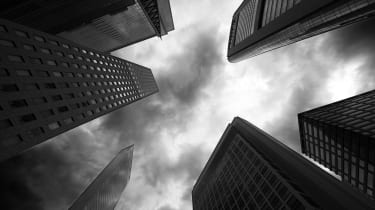investing
The U.S. economy contracted for a second straight quarter in Q2 according to the latest GDP data, sparking plenty of recession chatter around Wall Street.U.S. gross domestic product contracted 0.9% in the second quarter, following a decline of 1.6% in Q1. Although two consecutive quarters of negative growth don’t constitute the official definition of a recession, economists and strategists remain split on whether we’re in an actual downturn or not.
Which is fair enough. It’s nigh impossible to call a recession in real time when the economic cycle hasn’t been rocked by years of exogenous shocks. But this time around? Suffice to say the global pandemic and Russia’s invasion of Ukraine have conspired to create largely unprecedented macroeconomic conditions.
Indeed, the economy these days is just plain weird. Just look at how it’s generating all sorts of contradictory data. The labor market, in particular, sure doesn’t look recessionary. The economy created 2.7 million jobs in the first half of 2022. An ultra-low unemployment rate of 3.6% likewise doesn’t square with an economic slump. And then there’s consumer spending, which remains surprisingly robust.
No wonder the experts are confused.
It’s also important to know that Thursday’s GDP report was a preliminary estimate only. The data will be revised twice in order to get to a final reading.
And lastly, let’s not forget that the official arbiter of recessions is the National Bureau of Economic Research. Two consecutive quarters of economic contraction might look, sound and smell like a downturn, but we’re not in a recession until the NBER says so.
With economic conditions perhaps more confounding than ever, it seemed like an especially good time to check in with a range of economists and strategists. And so we’ve excerpted some of their commentary on the Q2 GDP print below:
“Insisting upon the precise definition of recession will be an even more fraught task in light of the unequivocal deterioration in economic activity reflected in today’s 0.9% contraction in Q2 real GDP. Yet real consumer spending continued to forge ahead and the job market still has legs. It is too early to call the end of this expansion, but the hour is fast approaching.” – Tim Quinlan, senior economist at Wells Fargo Securities”While this morning’s GDP reading marks two negative quarters of GDP growth, we’ll push back on the notion that we’re in a recession. The first quarter was marred by a widening trade deficit due a surge in imports. This quarter a slowdown in inventory accumulation tipped GDP growth into the red. Neither of these readings provide much of an indication to the strength in the underlying economy. Personal consumption grew for the eighth straight quarter. Looking at the gains in spending alongside continued strength in payrolls, it’s really difficult to call what we’re experiencing right now a recession.” – Cliff Hodge, chief investment officer for Cornerstone Wealth”Recession has arrived. Back-to-back quarterly declines in real economic activity are not part of the NBER determination of a recession – but the reality is that we have never before seen this condition without there being a recession. Waiting for the NBER to make the official declaration is nutty, since it generally waits more than six months after the downturn started when it publishes the announcement. The decay is evident and the leading indicator from the Conference Board, down four months running, points to more economic pain ahead. The labor market is the next shoe to drop.” – David Rosenberg, founder and president of Rosenberg Research”The back-to-back contraction of GDP will feed the debate about whether the U.S. is in, or soon headed for, a recession. The fact that the economy created 2.7 million payrolls in the first half of the year would seem to argue against an official recession call for now. But the more important point is that the economy has quickly lost steam in the face of four-decade high inflation, rapidly rising borrowing costs, and a general tightening in financial conditions. The economy is highly vulnerable to slipping into a recession. That might discourage the Fed from ramming through another large rate hike in September. However, until inflation subsides, further rate hikes are in the cards. And they clearly won’t reduce the odds of a real recession.” – Sal Guatieri, senior economist at BMO Capital Markets”While GDP declined for the second consecutive quarter, the official definition of recession is a judgmental mix of levels and rates-of-change across several variables, most of which continued to expand in the first half of the year.” – Jan Hatzius, chief economist, Global Investment Research Division at Goldman Sachs “Businesses added to inventories more slowly, which, like in the first quarter, was a drag on GDP. Without this inventory effect, real GDP growth in the second quarter would have been positive. The second quarter saw big headwinds to growth from nondurable goods spending as consumers pulled back in the face of higher gas and food prices. Nonresidential and residential investment in structures was another big headwind due to continued supply and labor shortages and higher long-term interest rates. While it seems inaccurate to think of the first half of the year as a recession, the outlook for the second half and into 2023 is dicier.” – Bill Adams, chief economist for Comerica Bank”The second consecutive negative GDP growth rate is raising significant alarms, as that is often how a recession is classified. However, these numbers do not show the full picture. The White House Council of Economic Advisers points to other key indicators, such as the continued strength of consumer spending and job growth in the first half of the year, as positive signs that we are not in a recession. As we are closely monitoring all factors, I expect the unemployment rate to remain below 4% throughout the second half of 2022, buying the Fed time to reduce inflation without triggering that recession.” – Steve Rick, chief economist at CUNA Mutual Group
